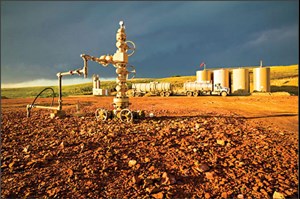Well abandonment—“Make it go away”
The oil and gas industry is in a period of time never before seen in its history. Covid-19 is driving more remote work; oil prices went negative for the first time ever; and our work force has been more affected than any downturn since the Great Depression. So where does that leave us? Over the years, I have observed a phenomenon that continues to grow and can help the industry as well as the environment—orphan wells that exist throughout North America. For the offshore industry, this can be significant with the decommissioning of platforms and plugging of wells. But, this article focuses on the onshore abandonment that is often confused with offshore decommissioning.
HOW DOES AN ORPHAN WELL HAPPEN?
When operators drill wells, there are several federal- or state-issued requirements for each region in the U.S. Abandonment liability is one such requirement, and the rules for it vary by state. The majority of states require the operator to secure an abandonment bond that is intended to ensure that the governmental entity has funds available, should the operator abandon the well. Everything goes in the normal course until the market hits a snag, such as the operator declaring bankruptcy or ceasing to exist.
So, what happens to that well in the agency’s eyes, if either of these situations occurs? First, a review must take place to determine whether the well had any previous bonds, or if there is an ownership in the well. Next, the agency must determine if there are non-operators that may have accountability for the well, often referred to as boomerang assets. These are assets that a previous operator thought that it sold, but it is the firm’s responsibility to cover abandonment costs. However, there are many examples of wells with no owner, and no Boomerang distinction. Those assets fall into the orphan category and become the state’s responsibility.
WHAT IS NEXT FOR THESE ASSETS?
The simple answer is that the state takes each well, puts it out for a Request for Quotation and, ultimately, a service company plugs the well. This process seems straightforward, but over the years, well abandonment has become much more than just pouring cement down a hole. With states’ various procurement policies, there needs to be a tender, an award, and then, finally, abandonment experts can execute on the well. With the oil and gas industry in a severe downturn, there is an opportunity to put crews back to work, to perform well abandonment. This creates the necessary path for a service company to scale operations, perform the work, and provide the barrier assurance required in each well.

When I started to look at this issue, I went back in history and found something very similar. The “New Deal” was a series of programs, public work projects, financial reforms, and regulations enacted between 1933 and 1939, while President Franklin D. Roosevelt was in office. It responded to the needs for relief, reform and recovery from the Great Depression. Major federal programs and agencies were created, including the Civilian Conservation Corps, the Civil Works Administration, the Farm Security Administration, the National Industrial Recovery Act of 1933 and the Social Security Administration.
They provided support for farmers, the unemployed, youth and the elderly. What can we learn from the New Deal today? I believe we could use this concept as a vehicle to handle all the orphan wells in the U.S. The opportunity is to avoid a piecemeal, state-by-state approach, and instead to provide a total package to make much-needed progress across the country, Fig. 1.
WHAT IS THE SOLUTION?
Each state is working toward a solution to address the growing orphan well count, but there must be a well-funded, more consistent approach. The country needs a strategy that outlines how to manage orphaned wells effectively and efficiently. It is time to create a bulk abandonment program to return these sites for other uses.
California wants to use some of these lands for parks and other projects, for example. Imagine state agencies working together with service companies to put displaced employees back to work, to manage abandoned wells and return the land for new development. Imagine using advanced barrier assurance to seal the wells completely and help prevent hydrocarbons from impacting the surface.
It takes a unified and aligned strategy to tackle this challenge. Now is the perfect time to make this happen. As my dad would always say, “Git Er Dun.”


